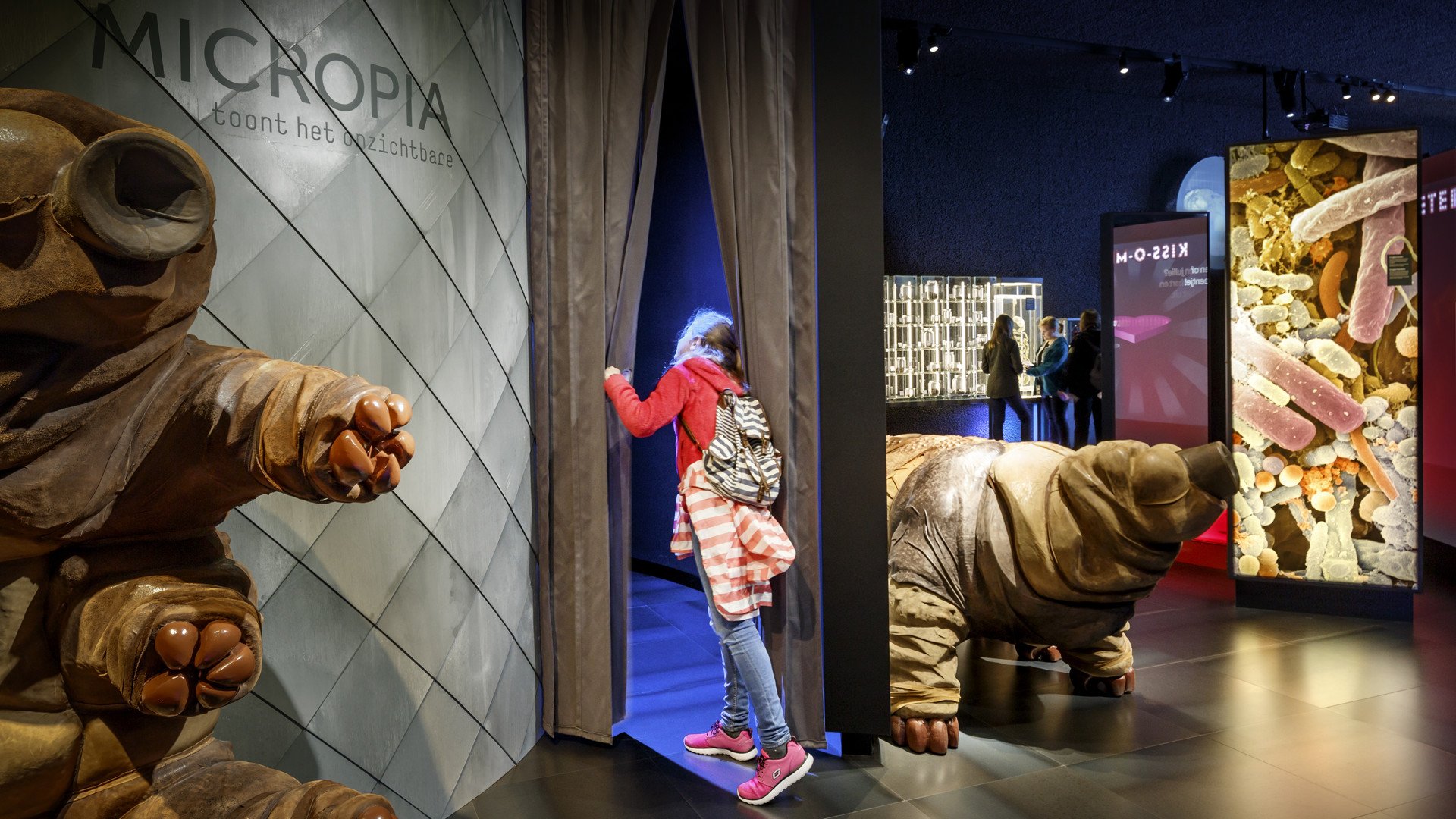International distinction
This year, ARTIS-Micropia won the Project of Influence award for innovation. The Best in Heritage conference in October brought together 28 award-winning museums and heritage projects. The participants and jury members could vote for their favourite and together chose Micropia as the winner of the Project of Influence. The chairman praised the opportunities offered by the groundbreaking technology in Micropia, which helps to make the invisible visible.
Microbes as scavengers in the park
Microbes played an important role in the ARTIS Park for the creation of sustainable compost. ARTIS uses the smallest organisms in the world, microbes, to dispose of the poop of those among the largest, elephants. Elephant dung is extremely rich in semi-digested plant matter. The ARTIS-Micropia lab technicians added a mixture of 80 types of microbes which work together to ferment the elephant dung into ‘bokashi’, a Japanese term for fermented organic material. The same process which occurs in sauerkraut, for example. The bokashi is used to improve the soil for the plants in ARTIS.
A sustainable alternative
It is not just the bokashi which shows how microbes can contribute to a more sustainable future; the two new exhibits which were unveiled in Micropia last year do the same. In February, ‘Een Schimmelige Toekomst’ (A Mouldy Future) went on display in the museum. This exhibition makes you look at fungi and their applications in a different way. Fungi can replace wood, leather and even plastic. The products are 100% natural and completely biodegradable. The ‘Plantaardig Plastic’ (Plant-Based Plastic) display was opened in June. This display gives visitors insights into the production and applications of the bioplastic PLA (polylactic acid). The action of lactic acid bacteria –microbes – transforms plant-based materials into a sustainable and innovative alternative to traditional plastic.
Making microbiology accessible to a wide audience
School visits to Micropia increased in 2017. Compared with the year before, the microbe museum attracted 42% more pupils. Micropia offers teaching materials for the last four years of primary schools to the highest classes of secondary school. As a result, the museum is making microbiology accessible to a wide audience. The appointment of Professor Remco Kort as Micropia professor, affiliated with the Vrije Universiteit Amsterdam (VU Amsterdam), ties in with this mission. As a result of the appointment, both the VU and Micropia wish to close the gap between science and the general public and make people much more familiar with the wonders of microbiology.

